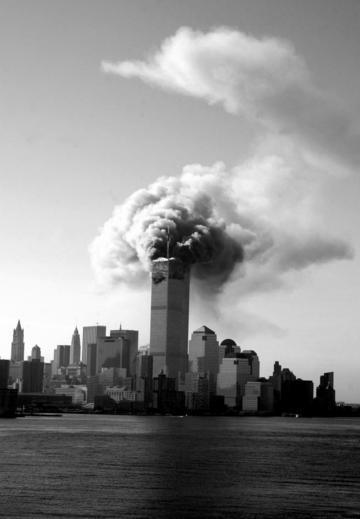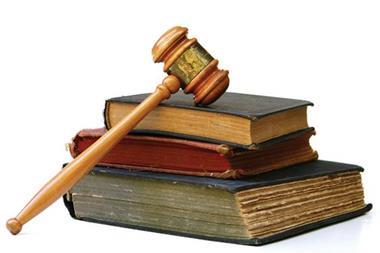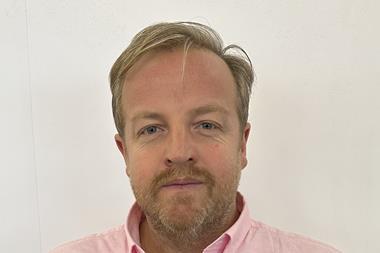The tragic events of 9/11 will never be forgotten, and nor will the hundreds of insurance workers, and others, who lost their lives. Ten years on, Insurance Times remembers the events of that terrible day, and asks how they have changed the industry forever

The tragic events of 9/11 will never be forgotten, and nor will the hundreds of insurance workers, and others, who lost their lives. Ten years on, Insurance Times remembers the events of that terrible day, and asks how they have changed the industry forever
It is difficult to find anyone who escaped the effects of the September 11 2001 terrorist attacks in New York City.
But, in terms of both business and personal losses, the insurance industry arguably bore the biggest brunt. Not only did it have to pay out $40bn (£24.7bn) – the second-biggest insured loss on record – but a huge number of the industry’s own executives lost their lives in the attack. Brokers Aon and Marsh had a large presence in the World Trade Center, and both lost hundreds of people. Most in the industry know someone who lost their life that day.
While the event was a sudden and dramatic shock, both financially and emotionally, it also had a significant lasting effect. In fact, out of the tragedy of September 11 has come a series of key changes to the insurance world that can still be seen today. It resulted in something of a rebirth for the industry, both affirming its worth and bringing about a purge of the poor practices it had slipped into during the soft market.
Looking at the event 10 years on, it is also a stark reminder that while it is still the most costly terrorist attack to date, the threat of future attacks is still very strong. And, despite the advances in modelling, exposure management and risk management that have been made over the past 10 years, the industry could easily be surprised by another unforeseen event.
Unimaginable loss
In the immediate aftermath of the event, the first surprise for the industry was the loss itself.
Almost everyone, from brokers to insurers and reinsurers, was surprised by the sheer number of lines that could be hit by a single event. Until this point, large market-changing events had been natural catastrophes, which predominantly affected the property book.
“Nobody imagined or had really thought through the possibility that almost every line of insurance could be involved in a loss,” Guy Carpenter chairman Britt Newhouse says.
“Life, workers’ comp, accident and health, property liability, professional liability, surety – there was virtually no line of business in the insurance world not involved in that loss and, as far as I know, that had never happened before.”
“Everything changed after September 11 and our market is certainly no exception,” Allied World Assurance chief operating officer David Bell adds. “From an underwriting perspective, 9/11 was in many ways a knock-out punch to the capital positions of certain carriers, and had a cascading effect over multiple lines of business.”
The complexity of the event is still being unravelled. For example, in its first-half 2011 results, Lloyd’s insurer Hiscox announced that it had received $9m after a successful subrogation action against the airlines whose planes hit the Twin Towers in 2001.
The 10 years since September 11 have hardly been quiet. The industry has been through several other transformational and learning experiences, among them the collapse of Enron and WorldCom in 2001 and 2002, respectively; the severe North Atlantic hurricane season of 2005; and the financial crisis of 2008.
And the terrorist attacks were not the biggest insured loss: the combined losses from Hurricanes Katrina, Rita and Wilma in 2005, expressed in 2010 amounts, are more than double the September 11 losses.
Yet the impact of the World Trade Center’s destruction had a far more marked impact on the global insurance industry. One of the most noticeable effects was a sharp rise in rates in almost all lines of business.
“It was the most significant multiline rate-hardening trigger event the industry has ever seen,” reinsurance broker Aon Benfield’s chief strategy officer Bryon Ehrhart says.
The evidence of this sharp increase is still visible today. “The pricing cycle that occurred after the event is still contributing materially to reported profits today for many insurers and reinsurers through substantial favourable reserve development,” Ehrhart says.
Coming to terms
September 11 also changed the industry’s view of risk. “In terms of reshaping perceptions of risk and how insurers manage risk, 9/11 was probably the most transformational event of the last decade,” says New York-based Insurance Information Institute president Robert Hartwig.
As a result of this new picture of risk, insurers had to re-evaluate their exposures and re-assess their view of risk aggregation in particular zones. While, prior to September 11, risks in various business lines were not seen in isolation, the losses from the terrorist attacks highlighted more links than were previously visible.
“It caused insurers to become aware of risks in their portfolio that they hadn’t imagined might exist before the events of 9/11,” (re)insurer Endurance Specialty Holdings chief executive David Cash says.
Furthermore, the attack forced the global insurance industry to come to terms with a risk it had paid little attention to before: terrorism.
Some countries did have a concept of terrorism insurance before the World Trade Center destruction. One example was the UK, which has had a government-funded terrorism scheme, Pool Re, in place since 1993 as a result of a string of Northern Ireland-related terrorist attacks.
But large parts of the global market, and the USA in particular, did not explicitly provide terrorism cover. It was covered under property policies simply by virtue of the fact that it was not explicitly excluded. The concept of terrorism underwriting was therefore virtually nonexistent.
“At the time, 9/11 was the largest insured loss in global history and the irony was that not a penny had been charged in premium for this type of risk,” Hartwig says. “A large-scale terrorist attack of this kind had never been conceived of before and was not priced into property insurance or reinsurance programmes.”
US government comes in
After 11 September 2001, terrorism exclusions very quickly became standard in insurance; a situation that remains today.
Businesses now needed terrorism coverage more than ever, but were unable to get it, as many companies deemed it uninsurable because of their inability to measure the risk.
They had little historical data, and barely any way of predicting the likelihood of another attack.
Therefore, the US government had to step in, and the Terrorism Risk Insurance Act (TRIA) was born in 2002. The act was the USA’s answer to Pool Re, though it was initially intended to be temporary. It pays terrorism losses after the individual company or industry-wide losses reach a certain point, and up to a limit of $100bn. The act does not cover personal lines.
The knowledge that the US government would step in to pay losses above a certain point gave insurers the confidence to start offering terrorism cover to businesses. The scheme’s usefulness and popularity is such that its expiry date has continued to extend. After being renewed in 2005, TRIA was replaced in 2007 by the Terrorism Risk Insurance Program Reauthorization Act, which expires in 2014.
But at each step the federal participation in terrorism risk has been reduced, leaving the industry to take an increasing share of the burden. Although the US government-backed terrorism insurance programme is still intended to be temporary, with its 2014 expiry date, many in the industry hope it will become a permanent fixture.
“Almost everybody in the insurance industry feels this legislation needs to be permanent,” Starr Indemnity & Liability Company and Starr Surplus Lines Insurance Company president and chief executive Charles Dangelo says. “There are scenarios that are potentially far too big for any one company, and arguably for the industry, to take on themselves when you think about what could happen in a very severe terrorism event.”
Terrorism finally covered
While September 11 prompted some companies to exclude terrorism risk, the heightened knowledge of its existence, coupled with a strong demand for cover, led several carriers to start offering cover independently of TRIA – so-called standalone terrorism cover. While this type of cover was not new, some contend that the events of 9/11 were a catalyst for growth of this market.
“There was a very small standalone terrorism market prior to 9/11, to deal with troubles in places like Sri Lanka with the Tamil Tigers, the Colombian FARC and the IRA in Northern Ireland,” Liberty Syndicates terrorism, fine arts and specie underwriter Mike Burle says.
“The unprecedented attack of 9/11 really did kick-start what we see today is a very mature standalone terrorism and political violence market.”
Bermuda steps up
It was not only terrorism cover that was tough to find in the aftermath of September 11. Because of the event’s far-reaching effects on the insurance market, prices jumped in all lines of business, and companies reduced or withdrew coverage.
The effect of 9/11 was exacerbated by the fact that the industry was emerging from the throes of a long soft market, and was heavily weakened by years of under-pricing and underwriting losses, particularly in US casualty.
Private equity companies saw an opportunity to invest in the industry, and a raft of new companies was formed to pick up the slack.
In all, around 10 new companies were formed, and were dubbed the class of 2001. Many of the number still survive and thrive; notable examples being Endurance, Allied World Assurance and Montpelier Re, which have made the transition from start-ups to core members of the global (re)insurance establishment.
These companies quickly deployed the capital their backers supplied to help plug the coverage and capacity holes that 11 September punched into the market. “The class of 2001 played a very meaningful role in the capital market’s ability to help Main Street rebuild itself quickly,” Allied World’s Bell says.
The formation of the class of 2001 also cemented Bermuda as a worldwide reinsurance hub. Bermuda was already fairly well established, with ACE and XL setting up there in the mid-1980s to plug gaps in the US casualty market, and a string of property-catastrophe underwriters – notable survivors being PartnerRe and RenaissanceRe – establishing themselves in Hurricane Andrew’s wake in 1993. But the arrival of the class of 2001 took the island to the next level.
“The capacity crunch was focused primarily on catastrophe and large corporate risk products where traditionally risk has been syndicated,” Endurance’s Cash says. “Syndication happens most efficiently in global insurance marketplaces and there were only two places where capacity could have formed to respond at that period of time. One was London, the other was Bermuda.”
He adds: “Before that time, Bermuda wasn’t a marketplace in the same sense that it is today. But Bermuda was able to emerge as one of the two major marketplaces in the world primarily because of the demand for large syndicated risk after 2001.”
Contract certainty nailed down
As important as underwriting and filling coverage gaps was, the payment of claims was vital. One of the most memorable claims – and indeed claims disputes – from September 11 was that for the property of the Twin Towers themselves.
The leaseholder of the World Trade Center site, Silverstein Properties, argued that the destruction of the Center’s twin towers by two passenger jets constituted two events and so they could expect a payout of $7bn from insurers. Insurers, on the other hand, insisted it was only one, and Silverstein was only entitled to half that amount.
The dispute ran for five years, with the verdict that the wording in some policies required payment only for a single event, but the wording in others put insurers on the hook for a two-event payout.
Part of the reason for the length of the dispute was the fact that wordings had not actually been finalised when the Towers fell. This sparked a global effort to achieve contract certainty: to have finalised wording in place either on the date of coverage inception or within a set timeframe thereafter.
This dispute and the issue of contract certainty also had a strong bearing on how insurance and reinsurance coverage was secured for the redevelopment of the World Trade Center site (see ‘A leap of faith’, overleaf).
Breaking down barriers
But the Silverstein dispute was a rarity, and the industry earned plaudits for paying claims promptly. So much so, in fact, that many believe faith in insurance was restored.
“In the immediate aftermath, there was a sudden and newfound appreciation for insurance and the critical pillar it represents in the economy,” recalls public policy consultancy Park Strategies managing director Gregory Serio, who was New York State’s insurance superintendent at the time of the attacks. “Prior to that, there was almost no recognition of insurance as a critical element of either the monetary system or the broader economy.”
He adds: “Those dollars that first flowed after 9/11 were not government or banking dollars, they were insurance dollars, flowing very quickly into the marketplace to stabilise both the geographic area of New York City, and Lower Manhattan, as well as sending out a message that there was this significant safety net.”
The events also allowed the industry to build new bridges and strengthen existing ties. One of the many difficult situations in the aftermath of the attacks was that collateral for non-US reinsurers had to be swiftly replenished so they could continue providing coverage for US insurers. One such reinsurer was Lloyd’s.
Under the collateral rules, Lloyd’s and other non-US reinsurers would have had to pre-pay its entire reinsurance gross loss of any reinsurance recovery into trust within 45 days. Instead, the New York insurance department gave Lloyd’s additional time to recapitalise its collateral accounts, which it successfully did.
As a result of the greater interaction, Lloyd’s lost a lot of its mysticism, and thus gained greater trust of US regulators. “The relationship with Lloyd’s changed dramatically. Until
2001 it was an arm’s-length regulatory relationship, borne out of a crisis itself – reconstruction and renewal,” Serio says, referring to the rescue plan, completed in 1996, that saved Lloyd’s from the brink of collapse.
“9/11 allowed people to see how Lloyd’s had changed, how this new entity that had emerged from reconstruction and renewal was able to operate in the event of a global disaster. It was the first big test for that new marketplace. But I think what it also did was to break down a lot of those barriers that develop in an adversarial relationship.”
On 28 July this year, Lloyd’s had its 100% collateral requirement in New York reduced to 20%. “I don’t think any of that would have happened if the fundamental relationship between Lloyd’s and the American regulatory community hadn’t changed after 9/11,” Serio says. “This is a direct by-product of how Lloyd’s addressed the 9/11 situation.”
In addition, the work on TRIA and other federal matters helped bring the insurance industry and the US government closer together.
“You had a whole new set of relationships being used for the first time,” Serio says. “That helped to set the stage for what has become a regular and institutionalised relationship between the Feds and the National Association of Insurance Commissioners.”
An industry rejuvenated
Just as the public began to see insurance in a better light, the industry also gained an opportunity to re-evaluate itself. The industry in general had slipped into bad habits during the soft markets, with sloppy underwriting and excessive competition taking their toll. Some executives report that there was a disillusionment with the industry, but this lifted when 9/11 banished the bad practices from the market.
Some say the industry is now more professional in many respects. “Most reinsurance brokers are now emphasising a technical approach compared to the more aggressive approach to risk placement that was employed in the late 1990s,” Endurance’s Cash says.
“This change in perspective has made them more successful in selling to their clients, but it has also made them more successful in working with reinsurers.”
In many ways, the industry is a far better place as a result of the changes wrought by the terrible events of September 11 2001. It certainly has a greater appreciation of both terrorism risk and how to manage large accumulations of risk.
But the threat of terrorism has not gone away. There is a sense that the death of Osama Bin Laden could spark retribution from his followers, for example.
“One thing that 9/11 and other catastrophic events remind insurers of is that they don’t know everything. No matter how good your models are or how you underwrite and engineer against things, stuff happens. You have to put something into your thinking and the management of your business to deal with that,” Guy Carpenter’s Newhouse says.
“The industry has got much better at being able to understand what the exposure is if something happens in a particular place at a particular time. But it is still very difficult, if not impossible, to predict where and when it is most likely to happen.”
Though it has clearly learned many lessons over the past 10 years, there is still plenty of scope for the industry to be caught off-guard by a future event.
———————————————————————————————————————————————-
Personal accounts
‘Vivid memories’ - Britt Newhouse, chairman, Guy Carpenter
“I was in the South Tower in the 52nd floor when the second plane hit our building on the 76th floor. I have pretty vivid memories. There is not a day goes by when I don’t think about how lucky I am. I walked down and out of the South Tower and the building came down around 10 minutes after I got out.
“We didn’t know the building was going to fall down at the time. In the South Tower, we had 20 minutes between when the first plane hit the North Tower and when the second plane hit us. Because we had been in the building during the previous attack in 1993, we didn’t have to tell people to leave.
“The vast majority of the Guy Carpenter people got in the elevators and out of the building in that 20 minutes. Being the senior person in the office at the time, I shut the office down and sent everybody home. Most of the people Guy Carpenter lost were working in the North Tower because we had run out of space. A few people were killed on the streets by debris.
“While we were walking down the 55 flights of stairs to the ground level, the thing I remember most was that it got hotter and hotter because the building basically behaved like a toaster – the heat from the fire ran through the metal frame. We were more concerned about the fire than collapse.”
‘With my own eyes’ - Robert Hartwig, president, Insurance Information Institute
“My office is three blocks from ground zero. I was here. I watched it with my own eyes. I was working at my desk and I heard a loud roar. Then I heard a muffled boom sound. I’m on the 24th floor and my window faces north. I didn’t know what it was. The woman in the office next to me came out and asked what was going on. We went to a west-facing window and we saw on the top of the North Tower what was at that time, within two minutes of it happening, a small fire. We assumed that a small plane had accidentally flown into the tower. That didn’t surprise me because I have a pilot’s licence and I have flown up and down the Hudson river near the towers. Quite frankly, I was surprised that no one had ever crashed into them.
“With the second strike, we knew that it wasn’t an accident. I watched both towers fall with my own eyes and felt it and smelt the debris – our building was hit by that. One of our employees suffered minor injuries and was cut by debris on the ground as she was coming to work when the tower was struck. We were lucky in that respect.
“It was surreal. You have watched it on television but to be less than a kilometre away, it is a different experience because not only was it visual, it was close up and then you felt it, you smelt it, you heard screams.”
‘One degree of separation’ - David Cash, chief executive, Endurance Specialty Holdings
“I was scheduled to fly from Bermuda to New York at lunchtime that day and my travel agent alerted me that the flights were all grounded. That’s when I, like others, watched the events unfold on TV and as I watched the Towers collapse, I was simply staggered by the images.
“Once air traffic opened up a few days later, I flew over New York and we passed over the World Trade Center site at night. You could see the floodlights and look down into the site, which made the reality of the situation even more striking.
“Around a month later, I travelled to the site. There was a pile of scrap metal literally six-stories high – like a building in itself. Our industry is quite small and in that downtown New York area there were many, many insurance professionals who are not with us now. Many people in our industry can say that they have a one degree of separation relationship with what happened on that day. We all, myself including, know someone who was killed.
“At the moment I witnessed the events on TV, it was clear to me that things were going to be different both politically and in our industry. All of us saw it. It was visually stark. When I look back, while it was clear that it was a turning point, it was hard for any of us to imagine the full impact of what would unfold for our industry.”
‘Like it was yesterday’ - Gregory Serio, managing director, Park Strategies and former New York State insurance superintendent
“I remember everything about that day like it was yesterday. I remember the blueness of the sky, the blackness of the smoke. I remember worrying about where my employees were and I remember sleeping on my sister’s floor that night. And I remember going into the site.
“At the time, I was also the volunteer fire chief in Albany. When I was the deputy superintendent, I worked on creating an urban search-and-rescue team for New York, located in Albany. That team was the first team with a significant cache of equipment at Ground Zero that afternoon. Unusually for an insurance regulator, I managed to get a glimpse of the horrific extent of this event by actually working on the site that night – and the next night and the night after. I was working there until I simply couldn’t do two jobs working 20 hours a day.
“It helped me immeasurably, by standing in the midst of ruins, to understand both the size of the disaster and the human toll. It’s almost impossible not to have an appreciation for the human cost watching them take out fire fighters, police officers and civilians who were trapped and died in the wreckage, as well as understanding more the macro implications of it. It provided an insight I would never have had if I was merely the insurance commissioner.”
‘We had to function’ - Charles Dangelo, president and chief executive, Starr Indemnity & Liability Company and Starr Surplus Lines Insurance Company
“The attack struck very close to home. At the time, my office was in downtown New York on the East River. A number of people were looking at World Trade Center 1 out of the window of our office building and saw the plane hit World Trade Center 2. We told everybody to go home. We told them to come into work the next day if the office was open or if not to go to an alternative site if they were able to do so. We knew, being an insurance company, that we had a lot of work ahead of us and we had to function. We needed to be there for our policyholders.
“We had an alternative site in New Jersey where I was up and running by 8am the next day. We were contacting brokers and our accounts, saying: ‘Let us know what we can do’, but at that point nobody really knew. They were still assessing whether they had people in the building.
“Because of the presence of Marsh, Aon and others in the building, all of us had friends and associates there. As news came in, we heard that some did make it out. We heard that others did not. In our business, we see serious events that create significant property damage and loss of life; but it really struck home when these were people we worked with day in, day out who didn’t survive.”
———————————————————————————————————————————————-
A leap of faith: the WTC rebuild
It was no mean feat to convince insurers to come on board with the rebuild of the 9/11 site, but leaseholder Silverstein Properties knew it would be worth the fight
Just as the insurance industry underwent a rejuvenation after the September 11 terrorist attacks, so too has the site that the atrocities laid to waste.
The site’s leaseholder, Silverstein Properties, has used the insurance claims money it recouped from the loss of the World Trade Center’s iconic Twin Towers to rebuild the area. One of the buildings, WTC 7, is already complete, and the company plans to develop three more: WTC 2, 3 and 4.
The rebuilding would not have been possible without insurance money. But it would also not have got off the ground without still further support from the industry in the form of a comprehensive insurance and reinsurance programme.
And, as Silverstein’s vice-president of risk management, Shari Natovitz, explains, putting together such a programme was no mean feat. The first challenge was the sheer amount and breadth of the coverage required. “The project needed to be protected, which meant engaging the entire global insurance community,” Natovitz says.
“We were looking at a $6bn build and, in order to get capacity for that, we needed insurance from all over the world because we are also looking at carriers to produce significant limits for the protection of our workers under workers’ compensation, as well as the protection of the public passing by this project every single day.
“All told, when you start adding those dollars up, just for my projects alone you have a total property/casualty capacity approaching the $10bn mark.”
Moving on from the past
The next problem was attracting the insurers to take the risk. The highly publicised, sometimes fractious legal dispute between Silverstein and its insurers in the years that followed the terrorist attacks did not serve as a great starting point. And given what they had learned from the events of September 11, companies were reluctant to take large chunks of exposure in Manhattan, especially on the very site that had yielded them heavy losses last time.
Natovitz admits that, while most carriers were eventually willing to assist, there was some initial scepticism. “Many of them were reluctant to reach out to us, perhaps in part because of the litigation but also because we were an unknown quantity in terms of building a mega-project at that point,” she says.
“There was also reluctance on the part of any carriers to want to step into the World Trade Center site because they were concerned about their own aggregations.”
She adds that a handful of carriers refused to do business with Silverstein at all. “There were some carriers that stepped away from us as a result of the litigation,” Natovitz says. “We have spent the last five years trying to suggest to them that doing business together would be a good way for them to get to know us and also recoup some of the losses in premium dollars that they felt they paid out. We have had limited success with that, but it is only about four or five carriers.”
Bringing insurers on board
Silverstein got around the problem of reluctant insurers by setting up meetings between senior insurance executives and Silverstein’s project and design managers, as well as the firm’s president of World Trade Center properties, Janno Lieber.
“Through the litigious era of 2001 to 2006, the underwriters knew us by the headlines in the newspapers and what was happening in the courts,” Natovitz says.
“They didn’t really know who we were. Nor did they know what our capabilities were in terms of being able to develop and manage a construction project of this magnitude. The first step in us being able to meet the insurance demands that were put on us was to re-introduce ourselves to all the major markets.”
It paid off. The company’s insurance programme, covering a wide range of risks, is placed with 45 carriers though its broker, Willis. The programme also includes a captive insurer, the Greenwich Street Insurance Company, which provides terrorism cover.
While she stresses that all carriers had an important role to play in the programme, Natovitz mentions that particularly significant parts were played by Chartis and its subsidiary Lexington, ACE, XL, Munich Re and a range of Lloyd’s syndicates.
“Ultimately, we met with markets from London, Lloyd’s, Bermuda, the USA and Europe. All of those markets are participating on this insurance programme,” she said.
Insurers were also attracted by the safety measures built into the new existing and planned properties. These include a bunker-like construction of the central lift shaft and stairwells, wider-than-required stairwells to ease escape for occupiers and access for first responders in the event of a disaster, and dedicated communications networks to circumvent the problem immediately after 9/11 where cell phones and land lines failed, rendering communication between emergency teams almost impossible.
Getting it right
A big feature of Silverstein’s post-9/11 disputes with its insurers was the lack of clarity in the policy wordings, and the fact that final wordings were not in place for the entirety of the coverage. This had a big influence on how negotiations were conducted with insurers when putting the new WTC programme together.
Natovitz says Silverstein and Willis were at pains to ensure consistent wording across the programme and a complete understanding on all sides of the meanings of the wordings. “I’m very pleased to say that the entire industry learned from that softness of wording associated with 9/11. We went into the initial submissions to
the market with the single strong objective, when we approach coverage, of having absolute contract certainty.”
After ensuring consistency and comprehension, Natovitz said Silverstein then went one step further. “We added a designated adjuster to the property programme so we would have somebody who understood the coverage and the intent representing the programme. We also added a forensic accountant to the project as well, so all those issues would be upfront.”
Natovitz praised the individual brokers in Willis for helping the firm to achieve contract certainty. She also credited the carriers for their support.
“This has truly become a project that sought and received the support of the entire insurance and reinsurance community,” she said. “Without them, it would be a challenge to be able to rebuild, so we look at them as our partners and we look forward to continuing to work with them because they have been an extraordinary help to us.”






































No comments yet